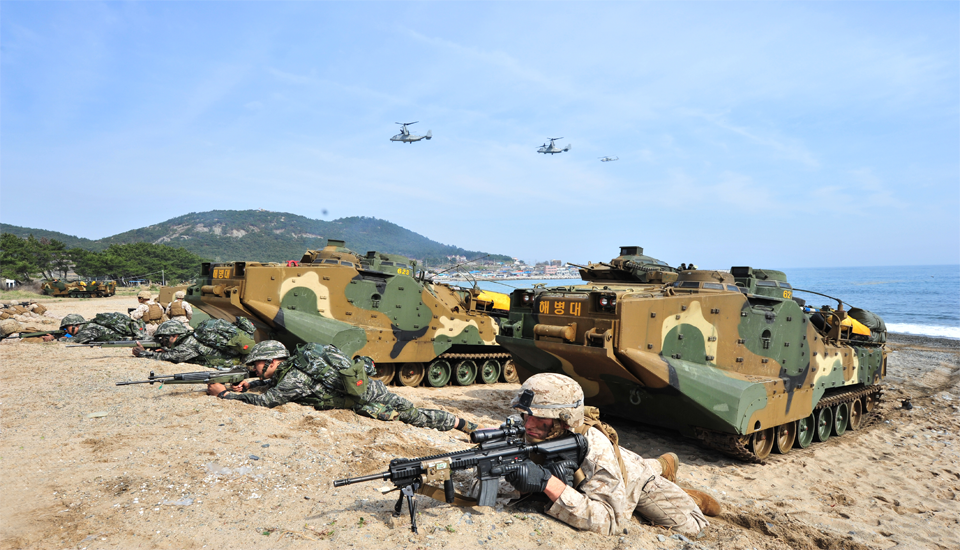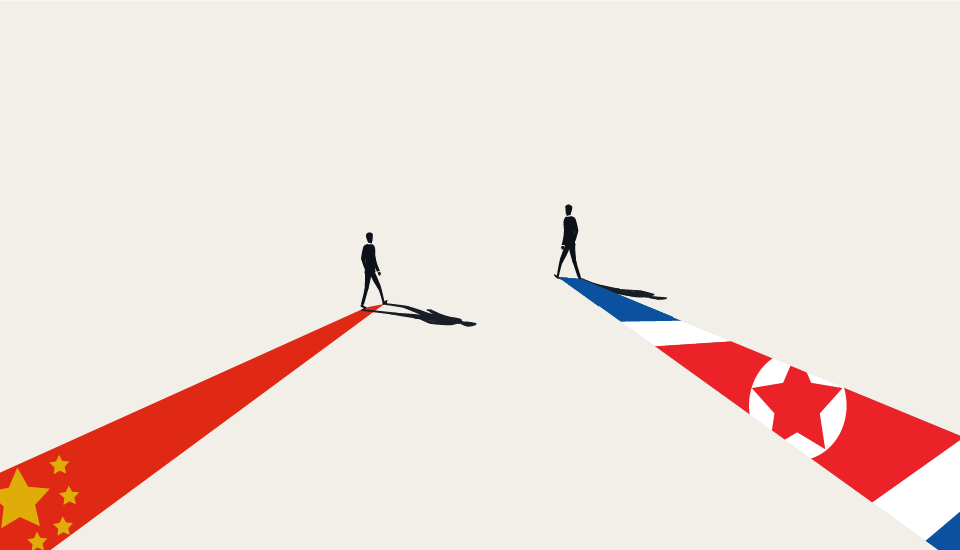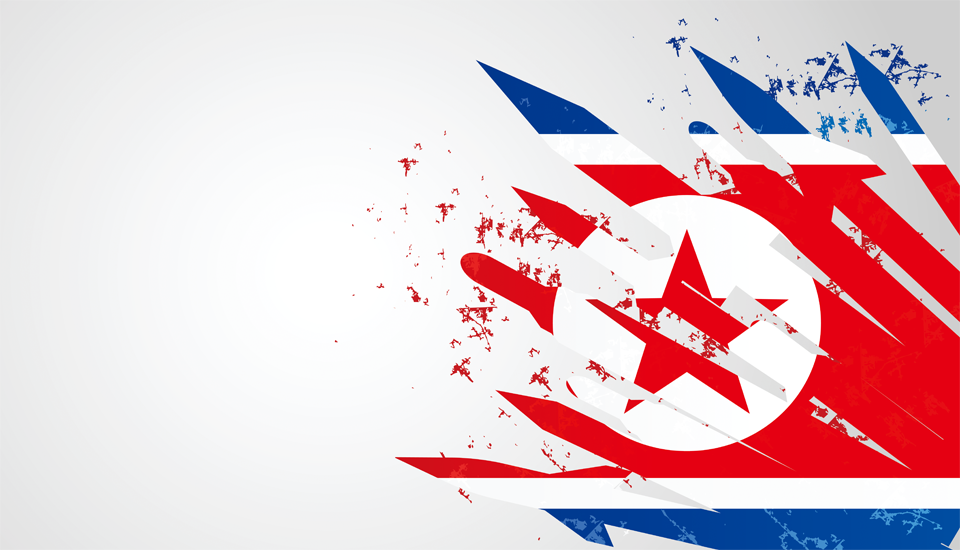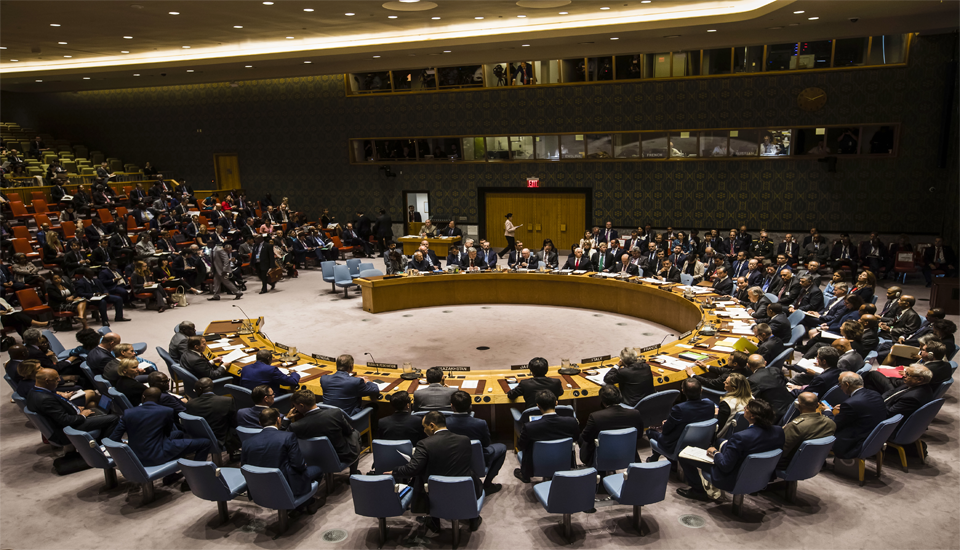
Will Spring Ever Come? Security Landscape of Northeast Asia in 2023
Commentary | March 06, 2023
Kyung-joo Jeon
Research Fellow at the Center for the Security and Strategy
Kyung-Joo Jeon, a research fellow at the Korea Institute for Defense Analyses, predicts that the Korean peninsula might repeat the days of fire and fury in 2017 this year. North Korea will likely turn to its military provocation tactics ahead of the ROK-US Freedom Shield Exercises in mid-March, DPRK’s 70th Anniversary of The Day of Victory in the Great Fatherland Liberation War in July, and another ROK-US joint military drill in August. Dr. Jeon suggests that Seoul should increase its strategic value as an essential global player while Washington seeks a stronger alliance network in the Indo-Pacific region if South Korea wants to live up to its policy goal of the “Global Pivotal State.”
Spring is coming, but there is little expectation of a warm breeze in the security landscape of Northeast Asia. Rather, the year 2023 would be like walking on thin ice, with a full-fledged start of the Decisive Decade or Zeitenwende. [1] In 2022, Vladimir Putin, a major revisionist, started his brutal invasion against Ukraine “rattling the nuclear sabre.” [2] China’s leader Xi Jinping laid the foundation for his ambition to arguably envision a China-centric world order. [3] Kim Jong Un boldly expressed his desire to gain a nuclear state status with North Korea’s increasing nuclear warfighting capacities. Major actors advocating the current rule-based international order, including the United States, France, Germany, and Japan, have set their own view on this watershed era and determined their courses for years to come by formulating a national security strategy. This struggle between revisionists and those who want status-quo will be most prominent in Northeast Asia, making three features: a darker nuclear shadow, increasing offensives in the gray zone, US’s integrated deterrence on the bumpy road.
A Darker Nuclear Shadow
First, revisionist rogue states will cast a darker nuclear shadow. Since the start of this brutal war, Putin has threatened to make a nuclear strike. Since the war has been prolonged for more than a year, Russia is likely to prepare a spring offensive enough to end the war, but the Ukrainian military and Ukrainian nation as a whole has still motivation and capabilities to resist. Experts remain concerned that Russia could start a nuclear war if it thinks there is no way to win its conventional war in Ukraine. [4] Putin recently announced that new strategic systems had been put on combat duty, and threatened to resume nuclear weapons testing.
In the meanwhile, the threat of catastrophic war on the Korean peninsula can be as grave as it was in 2017. [5] The first crisis might take place in March, when springtime Freedom Shield field training is scheduled. The situation can be further aggravated by another event in Summer. July 27 of 2023 is the ROK-US Alliance’s 70th anniversary, and at the same time, marks DPRK’s 70th anniversary of “The Day of Victory in the Great Fatherland Liberation War.” North Korea’s belligerent reaction is highly likely regarding another large-scale joint military drills are followed to be in August. Also, North Korea might want to finally conduct its seventh nuclear test that they have prepared since last year.
Increasing Offensives in the Gray Zone
Compared to its neighboring friends, China has been more patient in swinging its fist. Instead, it has chosen to increase its activities below the threshold of armed conflict, also known as gray zone. Short of an armed clash, these activities are considered efficient means to expand a country’s national power and win advantage in an area of interest. In 2023, China will continue employing many types of the gray zone activities, including military exercises, space development, missile drills, economic coercion, and cyber (or disinformation) warfare to pressure Taiwan, the US, and others to act according to its interests. [6] Recent events of spy balloons is one example of China’s daily gray zone activities. Since China’s leaders need to confront mounting domestic social, economic, and public health-related stresses in 2023, [7] it is likely to keep these gradual but influential activities rather than make a decisive military action.
China is not the sole actor in gray zone; North Korea’s missile drills and test launches, spy satellite launches, cyber/electronic warfare and diplomatic brawl at the UN will take place in 2023. Especially, it is scheduled to launch its first spy satellite in April, which would signal North Korea’s entry into space competition. Even if limited, North Korea will multiply malicious activities across all domains including space, cyberspace and electromagnetic spectrum, while refraining itself from provoking regional armed conflicts that is prone to be escalated. Amid the international community’s inability to respond, its efforts to neutralize sanctions regime and raise money through its cutting-edge crypto money laundering will continue. [8]
US’s Integrated Deterrence on the Bumpy Road
Washington has officially introduced the concept of integrated deterrence at the center of its security and defense strategy in 2022. Integrated deterrence is the core of US defense and deterrence posture to address the contemporary challenge posed by revisionists. [9] It requires using all instruments of national power at our disposal, in close collaboration with our counterparts across the US government and with allies and partners with an emphasis on the Indo-Pacific region. [10] Canada, Japan, India Australia, and even some European countries announced their respective Indo-Pacific strategy in 2022, in which they will try to find a solution to integrate some of their efforts within America’s alliance network in this region. It is expected to respond against a wide range of threats from malign gray zone activities to nuclear blackmailing.
The year of 2023 will be a year of both hope and disappointment in implementing integrated deterrence. The US has begun to deepen the discussion with its allies on their roles, missions, and capabilities and further reinforce joint deterrence capabilities in an integrated manner mainly against its pacing threat, China. Yet, its allies are likely to have more caution to stand against China, since it takes an enormous economic cost to build “zero-China” supply chains. [11] The US should assure its allies in support of its extended deterrence commitment, while asking them to make some risky steps close to the US side. In its latest Nuclear Posture Review, it has made it official to seek opportunities to improve its information sharing and consultations for nuclear deterrence in trilateral (ROK-US-Japan) or quadrilateral (plus Australia) settings. [12] Initial dialogues can be made in 2023, in which they will face their inevitably conflicting interests and ideas.
A Very Narrow Window for Cooperation
The prospect that the world will fall apart further in 2023 does not mean that there is no opportunity to pursue cooperation on common challenges. As learned from the Cuban missile crisis in 1960s or the crisis on the Korean peninsula in 2017, the possibility of a nightmarish event can encourage major countries to make concession and to work with adversaries. Since no leader in this Northeast Asia region – except Putin – wants to start an armed conflict that is potential to be escalated, a crisis might generate a rare opportunity to convene Northeast Asian leaders to talk about regional stability. Some expectations are in global summits including G7 and G20 scheduled in 2023, where countries would search for a solution to ease tension at least for a while and an agenda for collective commitment.
ROK’s Hard Choices
Surrounded by countries that decide to take some risks and encourage others to act together, South Korea is no longer able to avoid making hard choices. In order to live up to its title, “Global Pivotal State,” it should not shy from contributing to shaping and engaging in a new era. With no sign of North’s denuclearization, some Korean commentators have started to argue that it is time that the ROK should develop its own nuclear nukes. [13] Even though it is not a policy option that most South Korean security experts prefer, the debate on independent nuclear weapons can lead to much broader and necessary discussions about many fundamental questions yet to be answered. What kind of world does the ROK want to belong to? What are our priorities? What risks can we take? Considering the fast-changing security environment, South Koreans should try to answer them no later than 2023 and be better prepared to play a role worthy of its title at least in the region.
[1] US DoD, 2022, “National Defense Strategy”; Olaf Scholz, 2022, “The Global Zeitenwende: How to Avoid a New Cold War in a Multipolar Era,” Foreign Affairs 102, 1; The German Federal Government, 2022, “Policy statement by Olaf Scholz, Chancellor of the Federal Republic of Germany and Member of the German Bundestag, 27 February 2022 in Berlin” <https://www.bundesregierung.de/breg-en/news/policy-statement-by-olaf-scholz-chancellor-of-the-federal-republic-of-germany-and-member-of-the-german-bundestag-27-february-2022-in-berlin-2008378 (Accessed: February 28, 2023).
[2] Dan Sabbagh, 2022, “Russian nuclear sabre-rattling is designed to create fear in the west,” The Guardian https://www.theguardian.com/world/2022/sep/21/russian-nuclear-sabre-rattling-is-designed-to-create-fear-in-the-west (Accessed: February 28, 2023).
[3] Council on Foreign Relations, 2022, “Xi Jinping Envisions a China-Centric World Order, Argues Elizabeth C. Economy in New CFR Book” https://www.cfr.org/news-releases/xi-jinping-envisions-china-centric-world-order-argues-elizabeth-c-economy-new-cfr (Accessed: February 28, 2023).
[4] Julian E. Barnes and David E. Sanger, 2023, “Fears of Russian Nuclear Weapons Use Have Diminished, but Could Re-emerge,” New York Times https://www.nytimes.com/2023/02/03/us/politics/russia-nuclear-weapons.html (Accessed: February 28, 2023).
[5] International Crisis Group, 2018, “The Korean Peninsula Crisis (I): In the Line of Fire and Fury,” REPORT No. 293/ASIA 23.
[6] Chin-Kuei Tsui, 2022, “China’s Gray Zone Activities and Taiwan’s Responses,” Policy Memo, Stimson Center https://www.stimson.org/2022/chinas-gray-zone-activities-and-taiwans-responses (Accessed: February 28, 2023).
[7] Ryan Hass, 2023, “A roadmap for US-China relations in 2023,” Brookings Commentary https://www.brookings.edu/blog/order-from-chaos/2023/01/04/a-roadmap-for-us-china-relations-in-2023 (Accessed: February 28, 2023).
[8] Mike Orcutt, 2020, “This is how North Korea Uses Cutting-Edge Crypto Money Laundering to Steal Millions,” MIT Technology Review https://www.technologyreview.com/2020/03/05/916688/north-korean-hackers-cryptocurrency-money-laundering/ (Accessed: February 28, 2023).
[9] Justin Anderson and James R. McCue, 2021, “Deterring, Countering, and Defeating Conventional-Nuclear Integration,” Strategic Studies Quarterly 15, 1: 29-60; Justin Anderson, 2022, “Allied Assurance and Integrated Deterrence in the Indo-Pacific,” Inkstick Media Commentary https://wmdcenter.ndu.edu/Publications/Publication-View/Article/2965536/allied-assurance-and-integrated-deterrence-in-the-indo-pacific (Accessed: February 28, 2023).
[10] US DoD, op. cit., IV.
[11] Nikkei Asia, 2022, “Japanese Companies Explore How to Go ‘Zero-China’ amid Tensions,” https://asia.nikkei.com/Spotlight/Supply-Chain/Japanese-companies-explore-how-to-go-zero-China-amid-tensions (Accessed: February 28, 2023).
[12] US DoD, 2022, “2022 Nuclear Posture Review”, 15.
[13] Nam Hyun-woo, 2022, “Seoul Mulls Various Options Following Possible NK Nuke Test,” The Korea Times https://www.koreatimes.co.kr/www/nation/2022/10/103_337687.html (Accessed: February 28, 2023).
■ Kyung-joo Jeon is currently a research fellow at the Center for the Security and Strategy, Korea Institute for Defense Analyses. She holds her MSc in Comparative Politics from London School of Economics and Political Science, and her Ph.D. in Political Science from Korea University. Her main research interest include North Korea’s military or political issues and South Korea’s defense planning. Since 2019, she has taken part in forecasting the security landscape and prioritizing potential threats for a long-range strategic planning of the ROK MND. She has served as one of the reviewers for the ROK MND’s planning documents, Defense White Paper and National Defense Strategy (formerly National Defense Policy).
■ Typeset by Junghoo Park, Research Associate
For inquiries: 02 2277 1683 (ext. 205) | jhpark@eai.or.kr
Inter-Korean Relations and Unification

China’s Stance on North Korea’s “New Cold War” Narrative
Dong Ryul Lee | 27.February.2023

Re-Declared “Frontal Breakthrough”: North Korea’s Nuclear First Line in 2023 and Its Limitations
Won Gon Park | 08.February.2023

Divining the North Korean Nuclear Problem in a Multipolar World
Taesuh Cha | 16.December.2022
LIST